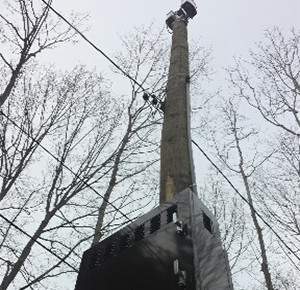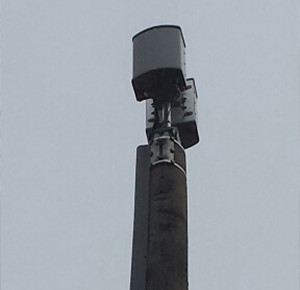The proposed Telecommunications Ordinance would be developed by a Committee of Village of Matinecock Trustees and Residents, along with outside counsel and technical advisors, and include provisions such as:
- The Need for Any Communications Service Must be Established. Where there is a need established, co-location by carriers on existing infrastructure is preferred to minimize new towers and poles.
- Full Disclosure of the Types of Antennas To Be Installed and Their Purposes Must Be Specified in Any Application. In contrast to giving broad permissions, with no specificity, as we saw in the draft agreement with Crown Castle, residents desire to know the exact nature of the businesses being conducted in their neighborhood, and to approve only specific uses of antennas. The Village will not give blanket permission for unknown future purposes.
- SEQRA Environmental Impact Review will be required by Village Trustees in all cases where a technology could have an environmental impact.
- Economic Transparency on All Aspects of a Potential Transaction is Required so that one can determine whether a contract is fair and equitable. Without understanding the economics involved, the business advisability of a transaction would be unknown. Trustees agree to be held accountable for the integrity and transparency of all business decisions.
- Contracts Must Have Termination Provisions allowing the Village to terminate a contract under certain conditions, including changes in the scientific or regulatory landscape.
- Full disclosure of known risks of technologies to be deployed. We expect any company with which our Village is in a business relationship to be forthright about the risks of bringing the technology into our community, as assessed by experts. Among others, risks might include fire, security, privacy and reliability risks, and weather-related risks. An ‘intention to be in compliance’ with government or industry guidelines is not the same as disclosing the known potential for risk to a community in which an entity desires to conduct its business. Residents of Matinecock want full transparency about risks, as well as compliance with any guidelines established to mitigate those risks.
- Zoning Approval with a public hearing to be required for any installation or additional antennas to an existing installation. This will ensure that there is a “need” to eliminate a gap in service for the antenna or installation, and that the aesthetic impact of any application is considered.
- Legal Conflicts of Interest. In any instance where the Village’s outside counsel has a conflict of interest, by virtue of the firm also representing telecommunications providers, residents will be notified of this potential conflict of interest, and a different law firm, without such conflicts of interest, will be engaged to offer a second opinion on the legal terms of a contract. Any law firm opining on the fairness of the business or legal terms of a long-term contract the Village would enter into will specifically do so in writing.
- Protection of Property Values. Matinecock residents are aware of the impact that nearby antennas can have on property values due to unattractive aesthetics. Remote, industrial or commercial areas of Matinecock, not residential areas, will always be considered first for such installations, with every effort being made to keep antennas away from homes, where property valuations could be at stake.
- Telecommunications Planning. The Village will seek to partner with other nearby Villages to engage the services of a telecommunications expert to review current communications options in this area, in light of the changing regulatory environment and available technologies, including landline, cable, fiber, cellular, wireless, and utility technologies, and to recommend how the technology mix could be optimized long-term for the sake of service reliability, quality, efficiency, economics, security, privacy, safety, and in light of projected extreme weather conditions. Residents prefer a strategic approach to telecommunications planning instead of one by one responding to a series of requests to operate in our area by parties whose interests are not necessarily aligned with our Village.








